Why Does My Dog Sit on My Head? [5 Reasons]
You probably have wondered, “Why does my dog sit on my head?” It may be frustrating when your dog decides to do this. A snuggle session can change quickly when your adorable pet decides that it would prefer to use your head as a seat, and this can leave you wondering what in the world your furry companion is thinking.
Your dog will likely not use your head as a seat often. However, it can be frustrating when they do – especially when you want this behavior to stop as soon as possible. Basic dog training can help ease stressful, challenging, or unwanted acts.
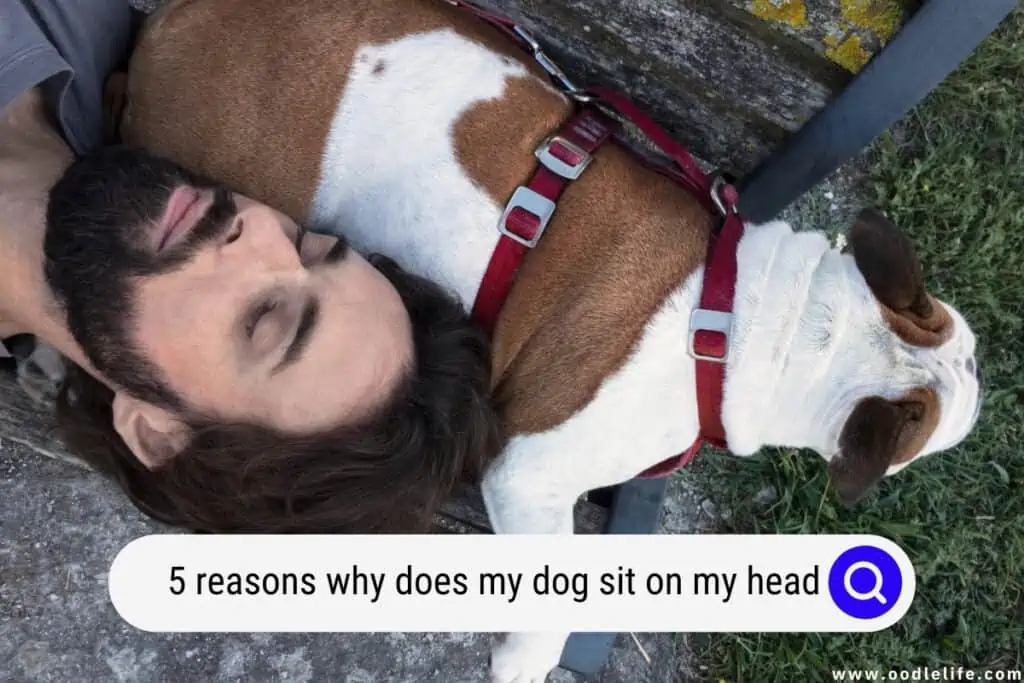
Laying or sitting on your head may be a more confusing behavior, and you may need to know why your dog sits on your head before you proceed with behavior modification. Review our top five reasons your dog may sit on you to see if you can narrow down the reason for your dog’s behavior.
Sitting on Your Head Is Normal
Dogs and humans have had symbiotic relationships for thousands of years, likely due to the similar environmental challenges and struggle both species experienced in early history. Because of this, dogs and humans are very loyal to each other. Loyalty has caused dogs to utterly steal human hearts and consider them man’s best friends.
However, this loyalty can sometimes cross lines. Sitting on your head may be an evolutionary trait to keep your family and friends safe, healthy, and happy. Here are our top five reasons your dog may sit on your head.
Your Dog Has a Need
Your dog may sit on your head if they have an unmet need. This need may be anything from hunger to thirst or the need for a potty break. Ensure that all of your dog’s basic unmet needs, and you may see that your dog stops sitting on your head.
Consider adopting a schedule that your dog can predict. This schedule may prevent your dog from sitting on your head to get your attention since they will be aware that they will get their needs met throughout the day.
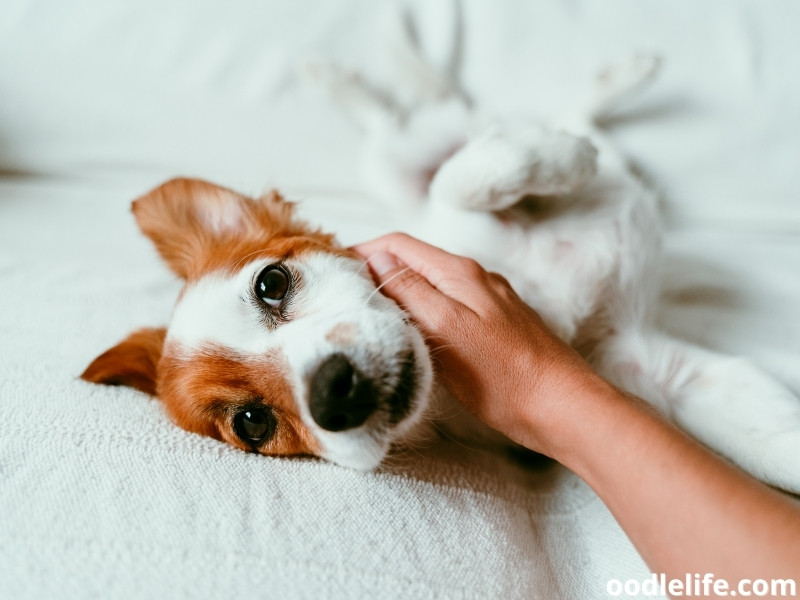
Your Dog Is Being Protective
Your dog may sit on your head to watch the area around you. Dogs are fiercely protective of their family, and sitting on you may be a way to keep you safe under their body.
You may want to look around your home and identify anything your dog may see as a potential threat. If your dog feels threatened and wants to keep you safe, they may become attached, clingy, and sit on you as much as possible.
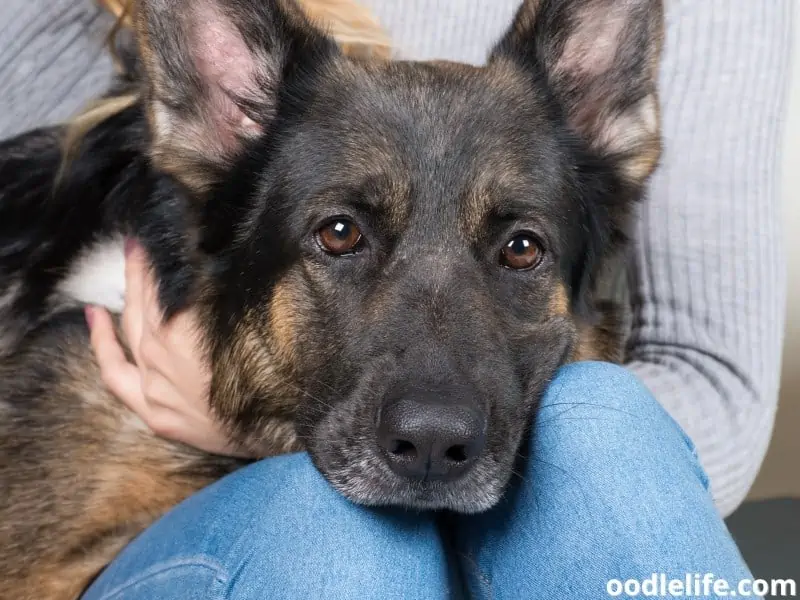
Your Dog Wants Your Attention
If your dog lacks proper attention, it may do anything possible to capture and hold your attention. A feeling of neglect can manifest in many ways, but most notably can lead to your dog sitting on your head or face.
Consider playing with your dog for at least 15 to 30 minutes daily to keep them from engaging in potentially dangerous behaviors. Some dog breeds may require more attention than others, so you may have to monitor your dog to identify their attention needs.
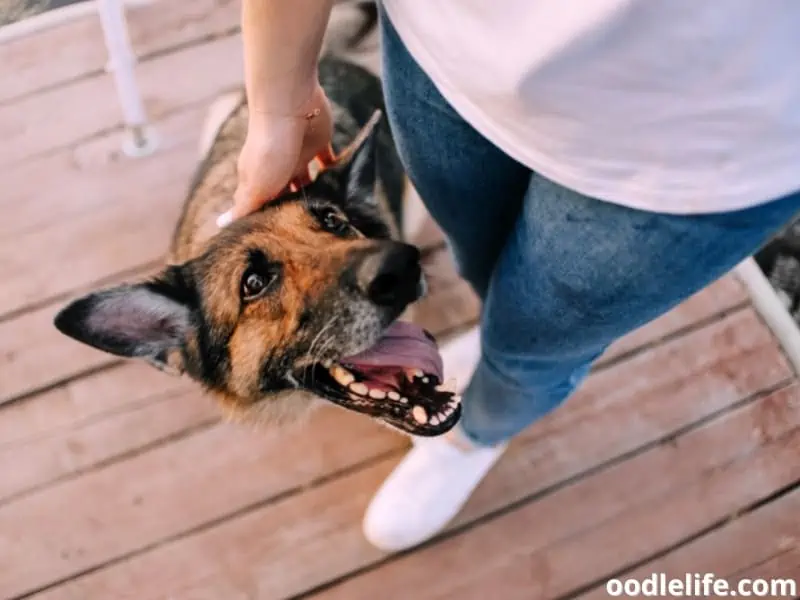
Your Dog Has Separation Anxiety
Your dog may sit on your face to get as close to you as possible if they suffer from separation anxiety. Your dog may not want you to leave or may be afraid when you leave. Adopted dogs from a shelter may be more susceptible to separation anxiety with their new owners than those from a breeder.
Consider giving your pet plenty of love and affection, and practice leaving a room for short periods to show them you will not be gone forever. Each time you leave the room, increase the intervals of your absence until your dog is secure without you.
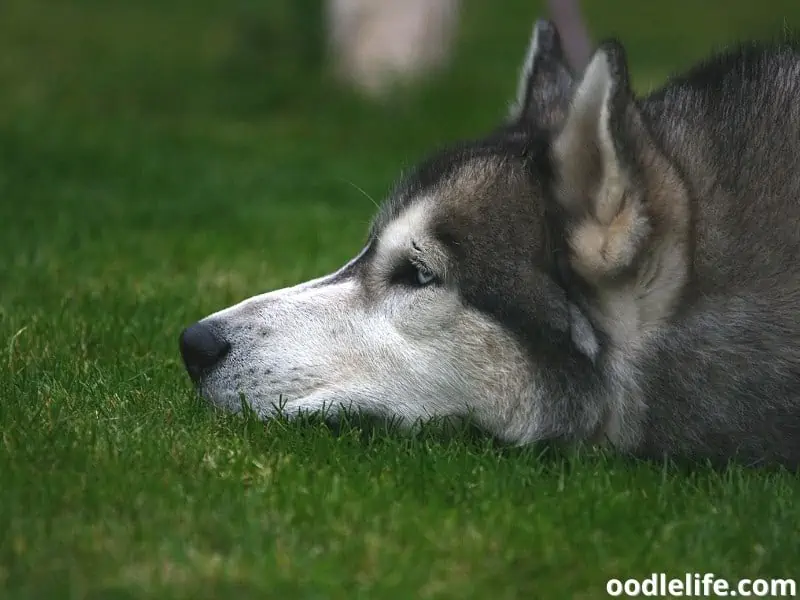
Your Dog Is Bored
Your dog may be bored and choose that the best option to get your attention is to sit on your head. Have plenty of toys and activities at your dog’s disposal to discourage this behavior. Some of the best toys include the following:
- Edible bones
- Ropes for tug of war
- Snuffle mats
- Tennis balls
- Squeaky toys
- Chew toys
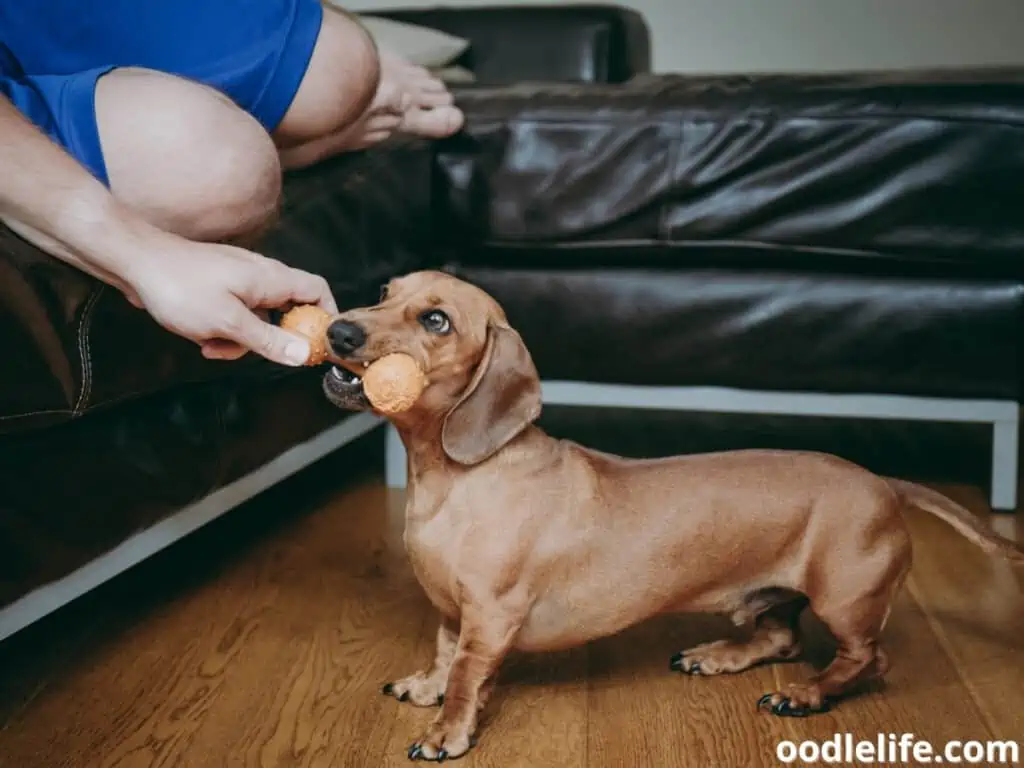
How To Stop Your Dog From Sitting on Your Head?
Your dog may not realize that you don’t want them to sit on your head, and they may require some additional training to stop this behavior from continuing. However, there are several ways to lower the frequency of this behavior or stop it altogether.
There are options available for you, whether you need the assistance of a professional team or want to take the reins yourself.
Contact a Training Service
No matter your state, there are plenty of dog training professionals. Additionally, small-scale, family-owned businesses will house and train your dog to exhibit positive behaviors when they come home.
If you feel out of your depth – and can afford the higher premium of boarding and training – consider reaching out to a training service to target and end troublesome behaviors.
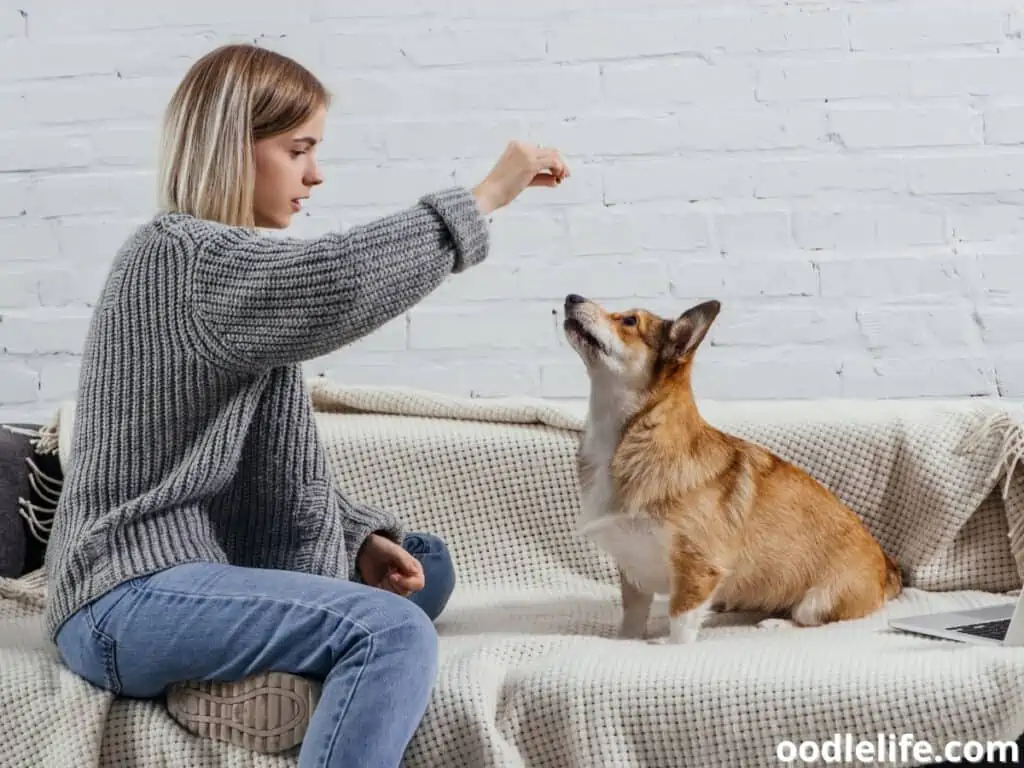
Learn Training Techniques
Many large chain stores offer pet training services for a small fee and short, weekly classes. The lessons learned in these classes can help you implement strategies into your daily life with your lovable pet so that troublesome behaviors will cease. These training services will likely give you recommendations for nutritious treats and non-edible rewards to keep your dog healthy and happy.
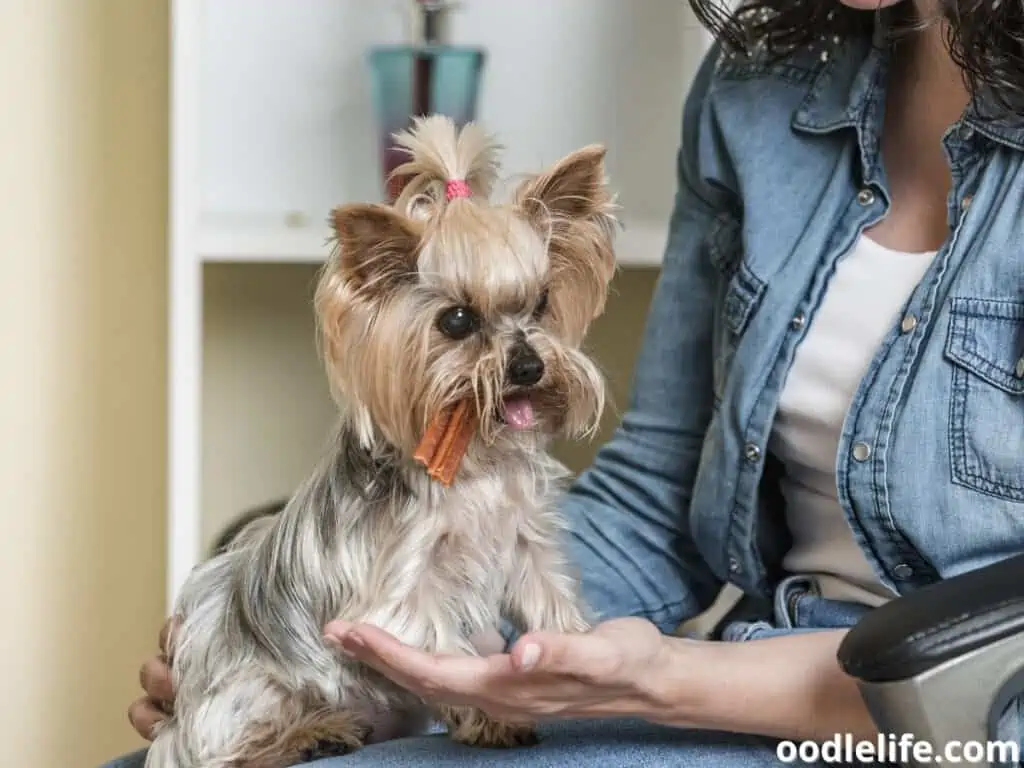
Ignore the Behavior
Sometimes, you can avoid negative behavior altogether to stop it from happening. Avoid situations where your dog will actively sit on your head and try to ignore addressing the behavior.
Some dogs may thrive on any attention, including negativity from behavior they know they should not do. When you ignore the behavior altogether, you may show your dog that this behavior will not get them the attention they desire.
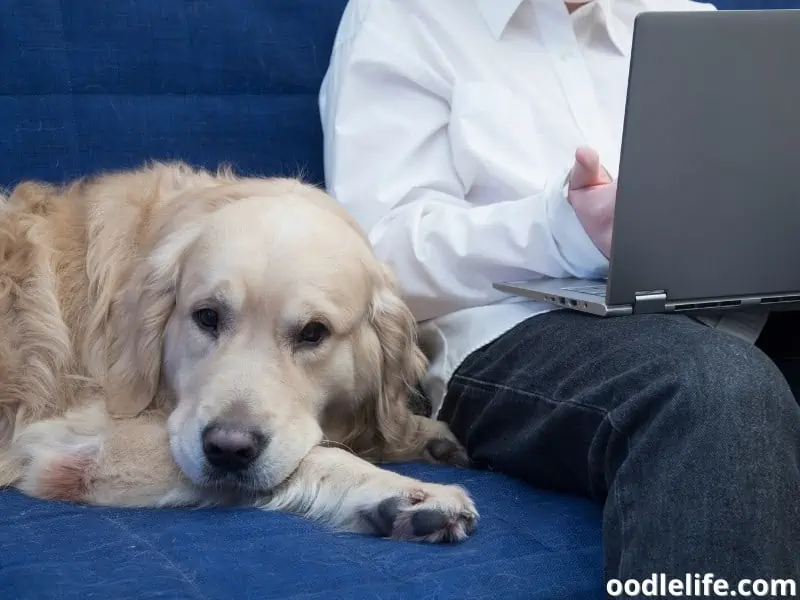
Address Your Dog’s Needs
If your dog is bored, wants attention, or is hungry, it may make a habit of grabbing your attention by sitting on your head. Consider addressing your dog’s needs. Bring them food, water, and toys, and give them some attention for a short period to keep them from being troublesome during cuddle time.
Even just 15 to 30 minutes every day of playtime can be enough to make your furry friend happy. Most dogs should not be in isolation for more than eight hours.
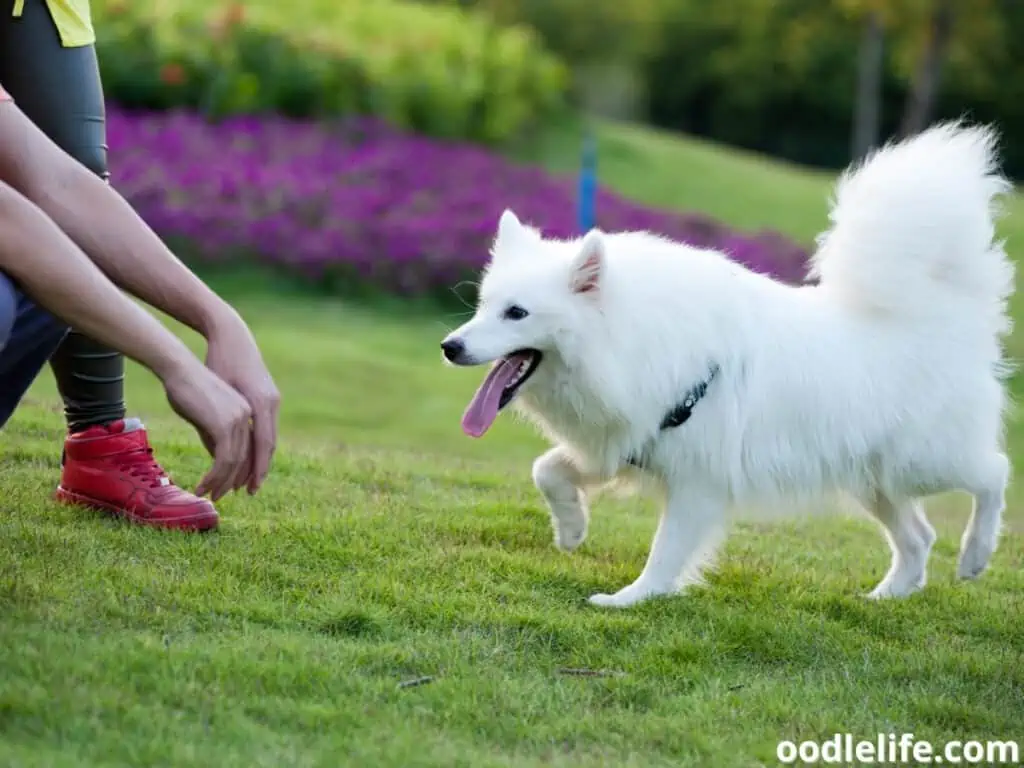
Use Positive Reinforcement
Positive reinforcement is the ideal way to gain consistently good behaviors from your dog. Use treats, affection, and verbal praise when your dog follows instructions.
It may be challenging to get cooperation from your pet as they begin training, but as your dog gets the hang of things, they will be more willing to listen and follow instructions.
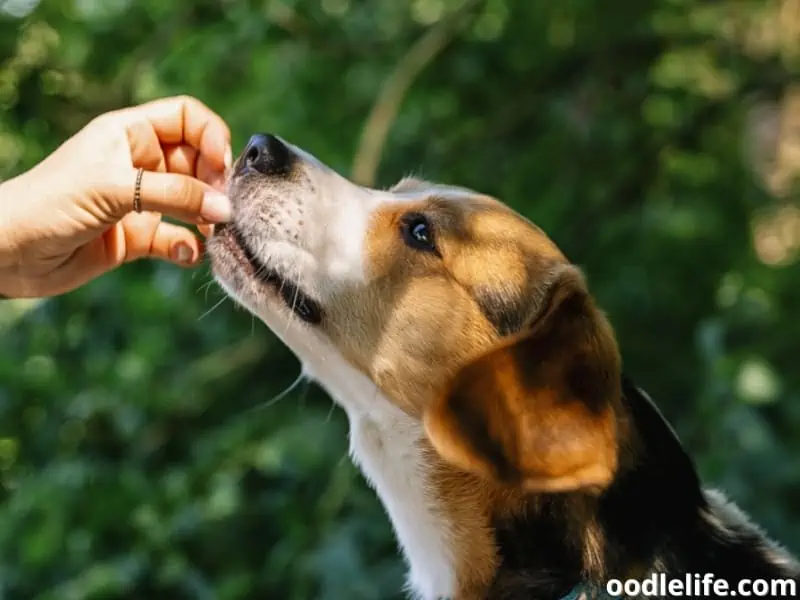
Final Thoughts
To answer the question, “Why does my dog sit on my head?” your dog may have a few reasons for doing this. However, these reasons can be subtle and challenging to narrow down. You may struggle to figure out why your furry pal crawls onto your head, but it can be as simple as suffering from boredom, wanting attention, or trying to protect you.
Several methods can stop your dog from sitting on your head and discourage this behavior until it ceases. Positive reinforcement is a method revered by most dog trainers and will have your dog watering at the mouth for treats or wagging their tails for attention and affection. However, you may want to reach out to a professional if you find yourself out of your depth.
Neither you nor your dog has to struggle, suffer, or be uncomfortable during cuddle time. The first step to ensuring a safe and fun home environment is identifying why your dog sits on your head.